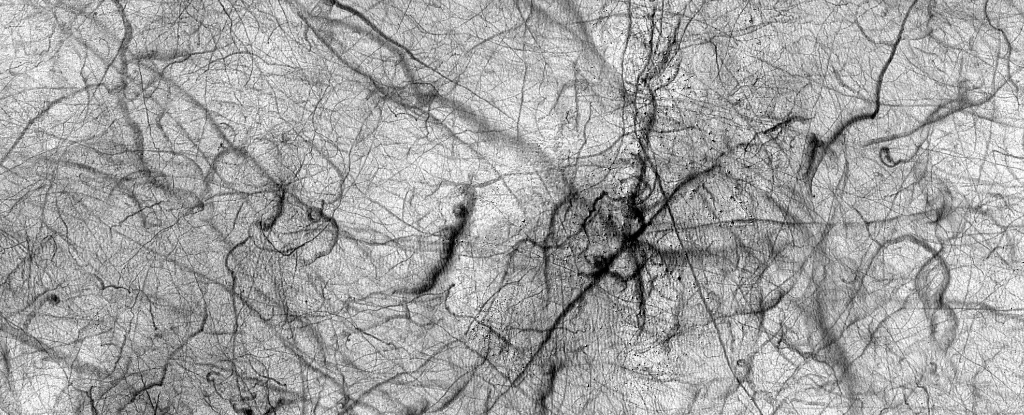Recent discoveries about the Martian landscape continually captivate the scientific community and the public alike. A significant highlight came from a stunning image taken by NASA’s Mars Reconnaissance Orbiter (MRO) in September 2022. This detailed snapshot showcases the active phenomenon of dust devils on the surface of Mars, specifically in the Haldane Crater region. These swirling mass of dust and debris offer a vivid glimpse into the planet’s dynamic atmospheric processes. The study of these dust devils not only enchants space enthusiasts but also serves practical purposes for scientists aiming to uncover the complexities of Mars’s climate and geological history.
The Formative Process of Dust Devils
Dust devils on Mars arise from a combination of local temperature variations and atmospheric conditions. As the Martian surface heats up under the weak sunlight, warm air ascends rapidly, creating low-pressure areas that draw in surrounding dust. This leads to the formation of rotating columns of air, which can vary considerably in size and intensity. Unlike Earth, where tornadoes are fueled by moist air and warmer temperatures, Martian dust devils thrive in the frigid, thin atmosphere predominantly composed of carbon dioxide. The study of these dust whirlwinds reveals much about not only the immediate environmental conditions but also the broader climatological trends that govern the planet.
The Significance of Dust in Martian Climate
While dust devils may appear to be mere curiosities, they play a vital role in the Martian climate system. The movement and deposition of dust across the planet significantly influence its weather patterns. As dust devils traverse the surface, they redistribute particles widely, contributing to changes in albedo and potentially affecting surface temperature. This dust circulation shapes not only local climates but also global atmospheric conditions, thereby presenting intriguing implications for the planet’s historical climate evolution. The ability of dust to travel across vast distances allows for the accumulation of significant layers over time, which can then be analyzed to ascertain historical weather patterns, possibly shedding light on periods when liquid water existed on Mars.
The presence of dust on Mars poses both challenges and opportunities, especially concerning technology and exploration efforts. Dust accumulation can obstruct the efficiency of solar panels on rovers and landers, hindering power generation for essential instruments. This challenge is especially pertinent in the context of sustained missions aimed at exploring the planet further. However, the same dust devils that threaten to obstruct solar arrays can also serve as natural cleaning mechanisms, occasionally scraping off accumulated dust. Understanding how to harness these natural phenomena could lead to improved designs for future instruments and missions that require long-term energy efficiency.
Observing and analyzing dust devils provides scientists with invaluable information necessary for planning future Martian missions. By studying the tracks left behind by these swirling phenomena, teams can gauge the dust deposition rates which can inform engineers about potential obstructions for long-standing robotic explorations. These insights become critical as plans for human exploration intensify. An understanding of the Martian climate and the activities of dust devils aids in developing protective measures for both machines and potential human inhabitants.
The mesmerizing dust devils of Mars encapsulate both beauty and scientific intrigue. As dynamic features of the Martian landscape, they provide a window into the planet’s atmospheric conditions and historical climate dynamics. The fact that they can both hinder and aid technological advancement adds another layer of complexity to their study. As scientists continue to unravel the secrets of these Martian whirlwinds, the knowledge gained will not only serve to enhance our understanding of Mars but also to refine our strategies for future exploration. The Red Planet remains an endless source of wonder and inquiry, with dust devils being a compelling feature in the quest to unlock its mysteries.



Leave a Reply